
Estonian coat of arms Estonia Flag, Bad Ischl, Ancestry Family Tree, National Animal, National
Estonian coat of arms The current coat of arms of Estonia is a golden shield which includes three slim, blue leopards (or lions passant guardant) in the middle, with oak branches along the side of the shield. The heraldic lions of the coat of arms are the most ancient of Estonia's symbols.

Estonia Coat Of Arms Patches by Coat Of Arms CafePress
Description The coat of arms of Estonia depicts a golden shield, which includes three slim blue lions passant gardant with red tongues in the middle and golden oak branches along both sides of the shield. The lesser coat of arms lacks these oak branches.
Coat of Arms of the Estonia Governorate of Russian Empire r/heraldry
The National Coat of Arms of Estonia was officially adopted on June 19, 1925, and was restored on August 7, 1990. It features a golden shield, surrounded by golden oak branches. Within the shield, there are three blue lions, which are left-faced and with red tongues and are stacked on top of each other.

Coat of arms of Estonia Coat of arms, Estonia, Estonia travel
coats of arms of the 15 Headquarters of the Estonian Defence Forces Kalev Infantry Battalion Viru Infantry Battalion Artillery Battalion, 1st Infantry Brigade Air Defence Battalion Combat Service Support Battalion, 1st Infantry Brigade Artillery Battalion, 2nd Infantry Brigade Combat Service Support Battalion, 2nd Infantry Brigade Jõelähtme Parish
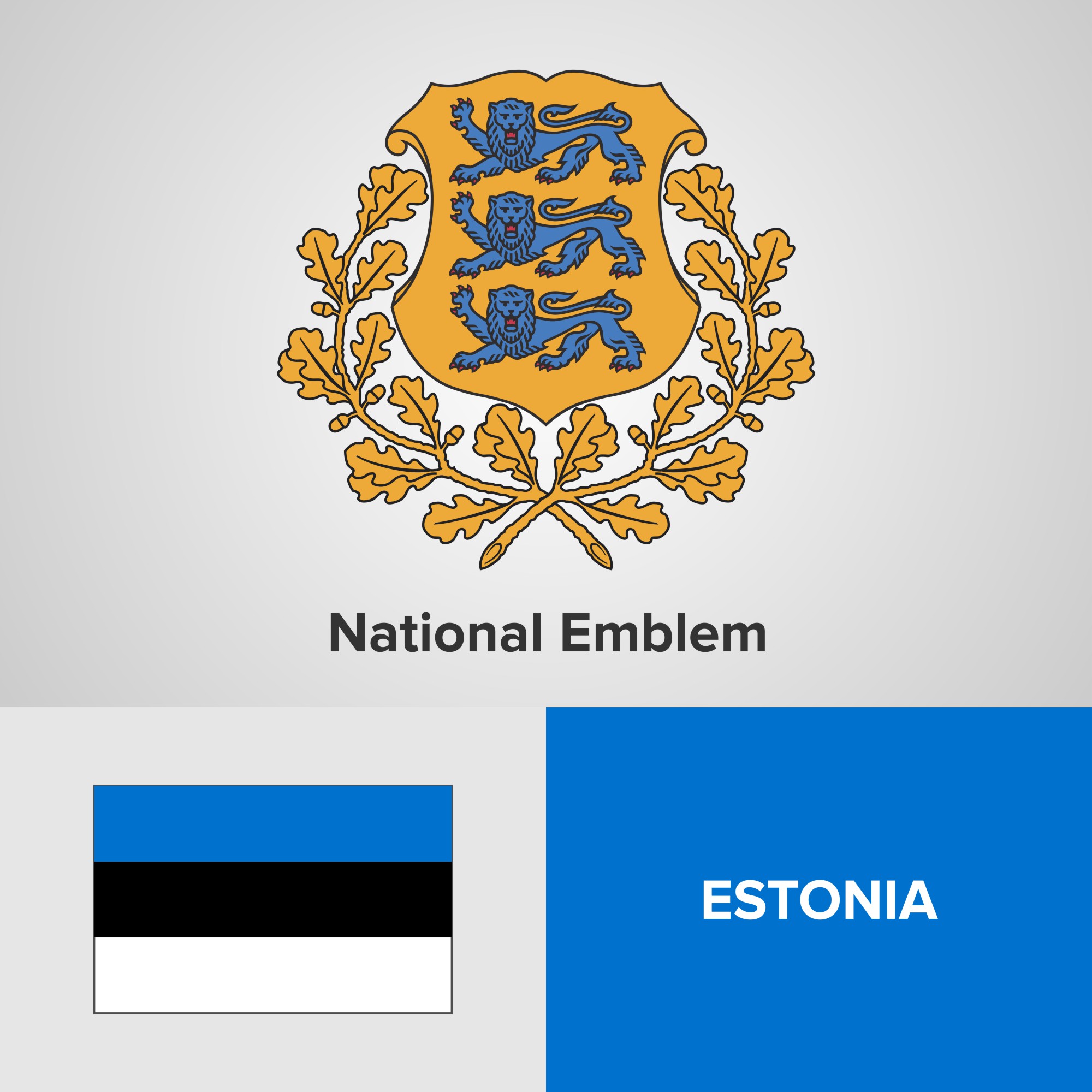
Estonia Vector Art, Icons, and Graphics for Free Download
The Great and Small State Coats of Arms of the Republic of Estonia were confirmed by the Riigikogu by a Lawadopted on June 19, 1925, which entered into force on the territory of the Republic of Estonia on July 21, 1925. According to the description in that Law, the coat of arms can be in two shapes, a large coat of arms or a small coat of arms.
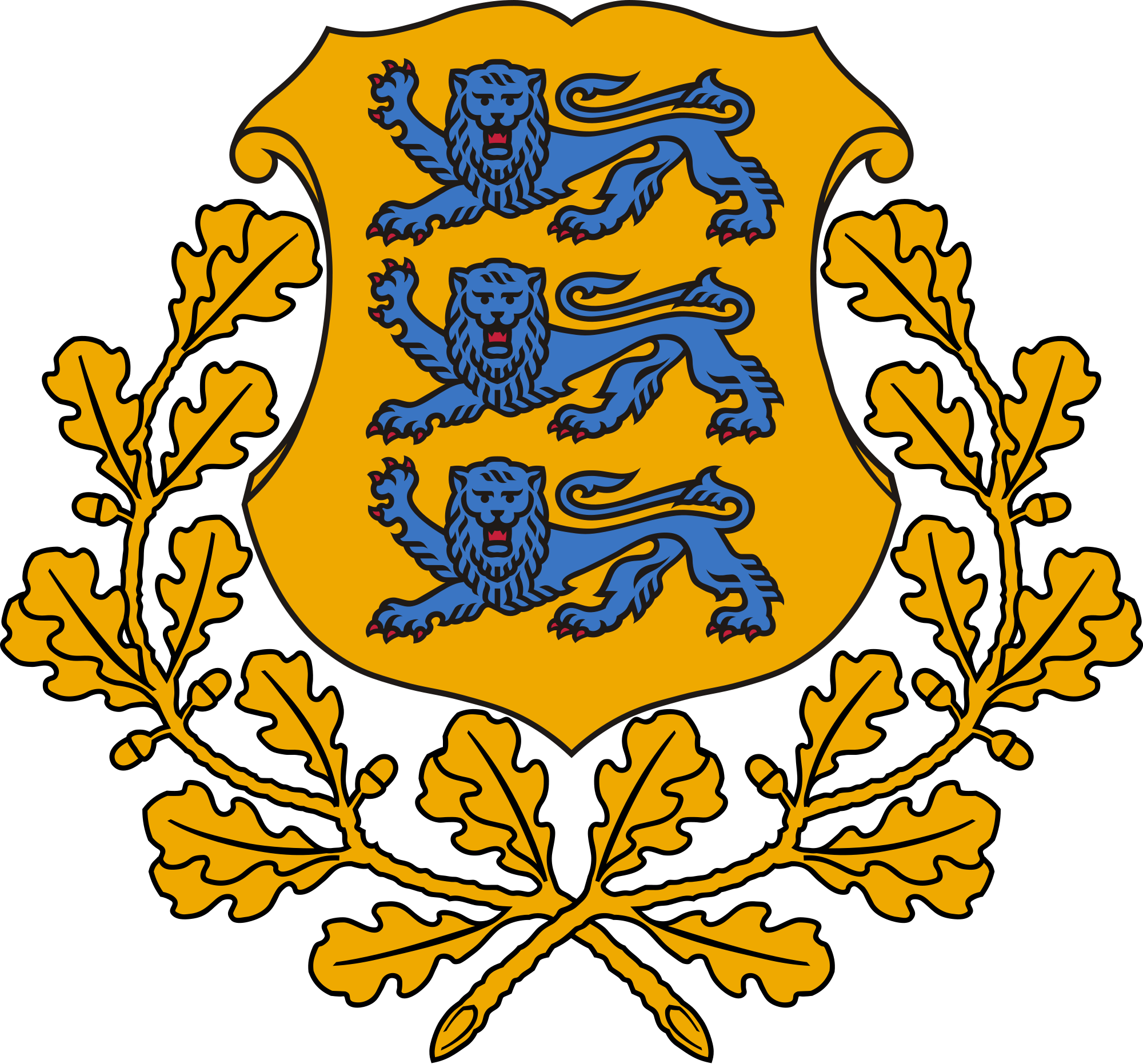
denmark Nordic Estonia
The Estonian coat of arms comes in two formats, a large one which shows three blue lions, passant gardant, on a golden shield framed on each side by gilded branch of the oak tree with the stems of the branches crossing at the base of the shield. The small shield is identical except for the gilded branches.
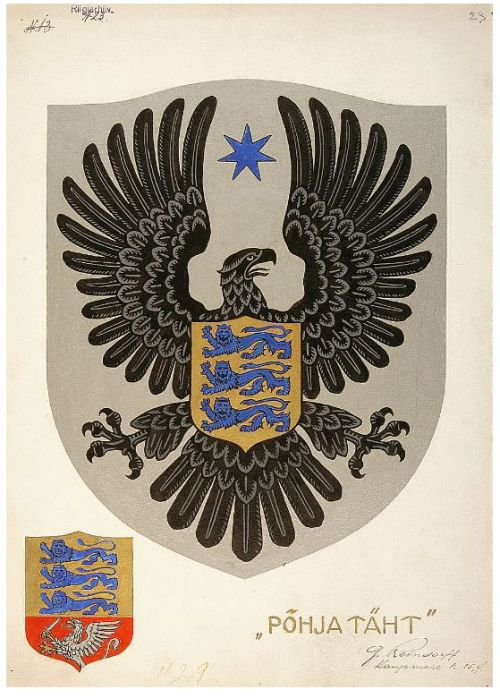
National Arms of Estonia Vapp National Arms of Estonia (coat of arms, crest)
Description The coat of arms of Estonia depicts a golden shield, which includes three slim blue lions passant gardant with red tongues in the middle and golden oak branches along both sides of the shield. The lesser coat of arms lacks these oak branches.

Estonia Crest Coat Of Arms Sticker Eesti Estonian stickers Helmet Auto Bumper eBay
Barn swallows and cornflower is the country's coat of arms. Museums are known to educate and connect visitors with the nation's history, culture, civilization, art, and architecture. The Estonian National Museum serves the same purpose and is considered one of the most significant tourist attractions.

Wappen von Estland Wappen von Schweden Wappen, Royal, Wappen, Wappen von Estland png PNGEgg
Coat of arms of Estonia (Redirected from Coat of Arms of Estonia) The Greater Coat of Arms The coat of arms of Estonia is a golden shield which includes three slim, blue leopard s (or lions passant guardant) in the middle, with oak branches along the side of the shield.
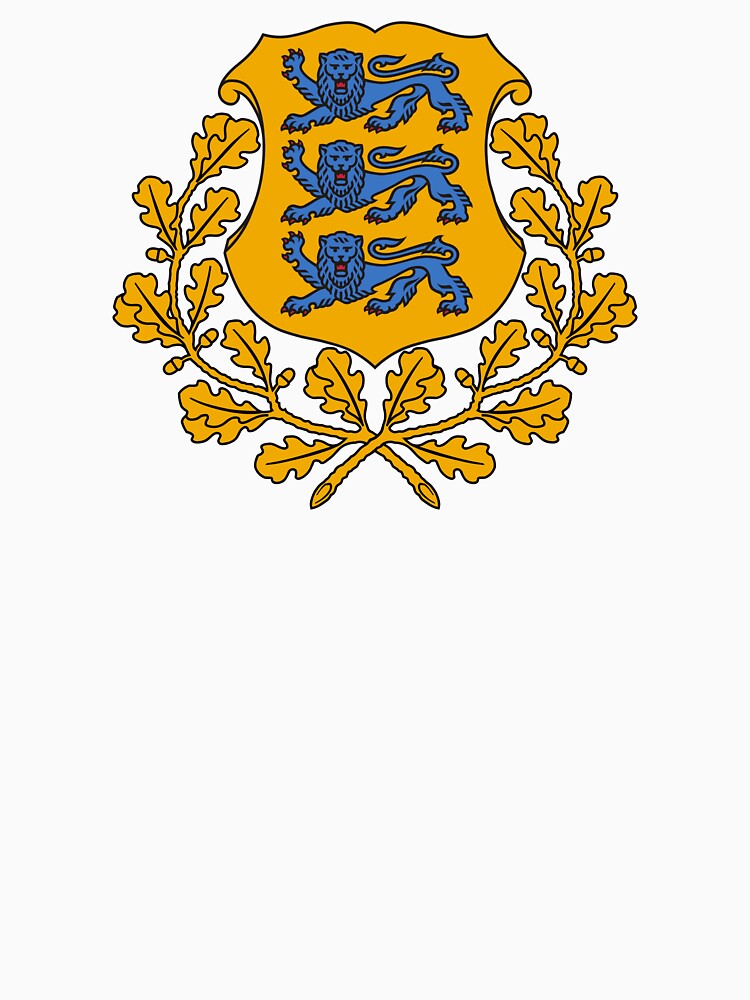
"Estonia Coat of Arms " Tshirt by abbeyz71 Redbubble
The coat of arms of Estonian chivalry also served as the coat of arms of the Province (Guberniya) of Estonia from 1721-1917. The three lions (leopards) also appear on the arms of Tallinn whose origin is noted to be in connection with the battle between the Danes and Estonians in 1219 below Tallinn. Alternative coat of arms of Estonia, 1922.
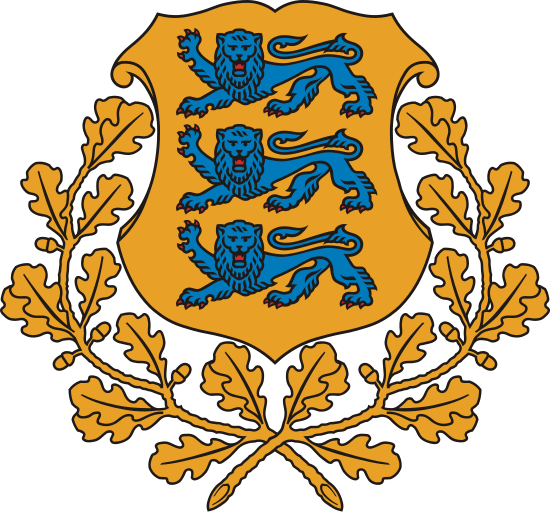
FileCoat of arms of Estonia.svg New World Encyclopedia
The following is a list of flags of Estonia. Dimensions are 7:11. Dark blue field with its coat of arms in the middle, "VIRTUTE ET CONSTANTIA" at the top, and "KAITSEPOLITSEIAMET" (historical), "1993" at the bottom. [3] [4] A white flag with the logo of Estonian Olympic Committee in the middle.
vectorised this coat of arms that I found. Alternate coat of arms of Estonia from 1922 heraldry
Introduction Coat of arms of Estonia / From Wikipedia, the free encyclopedia The coat of arms of Estonia is a golden shield which includes three slim, blue leopard s (or lions passant guardant) in the middle, with oak branches along the side of the shield. The Greater Coat of Arms
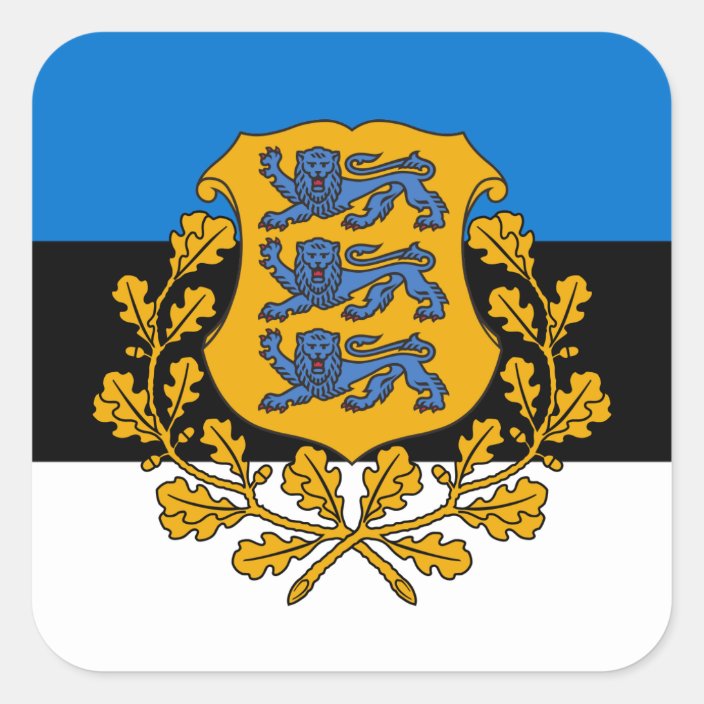
Estonian Flag & Coat of Arms, Flag of Estonia Square Sticker Zazzle.co.uk
S Coats of arms of settlements of Estonia (5 F) SVG coats of arms of Estonia (3 C, 21 F) Media in category "Coats of arms of Estonia" The following 39 files are in this category, out of 39 total. AKMvapp.gif 559 × 560; 52 KB Böhmisches Wappen Sekerka.jpg 560 × 597; 81 KB
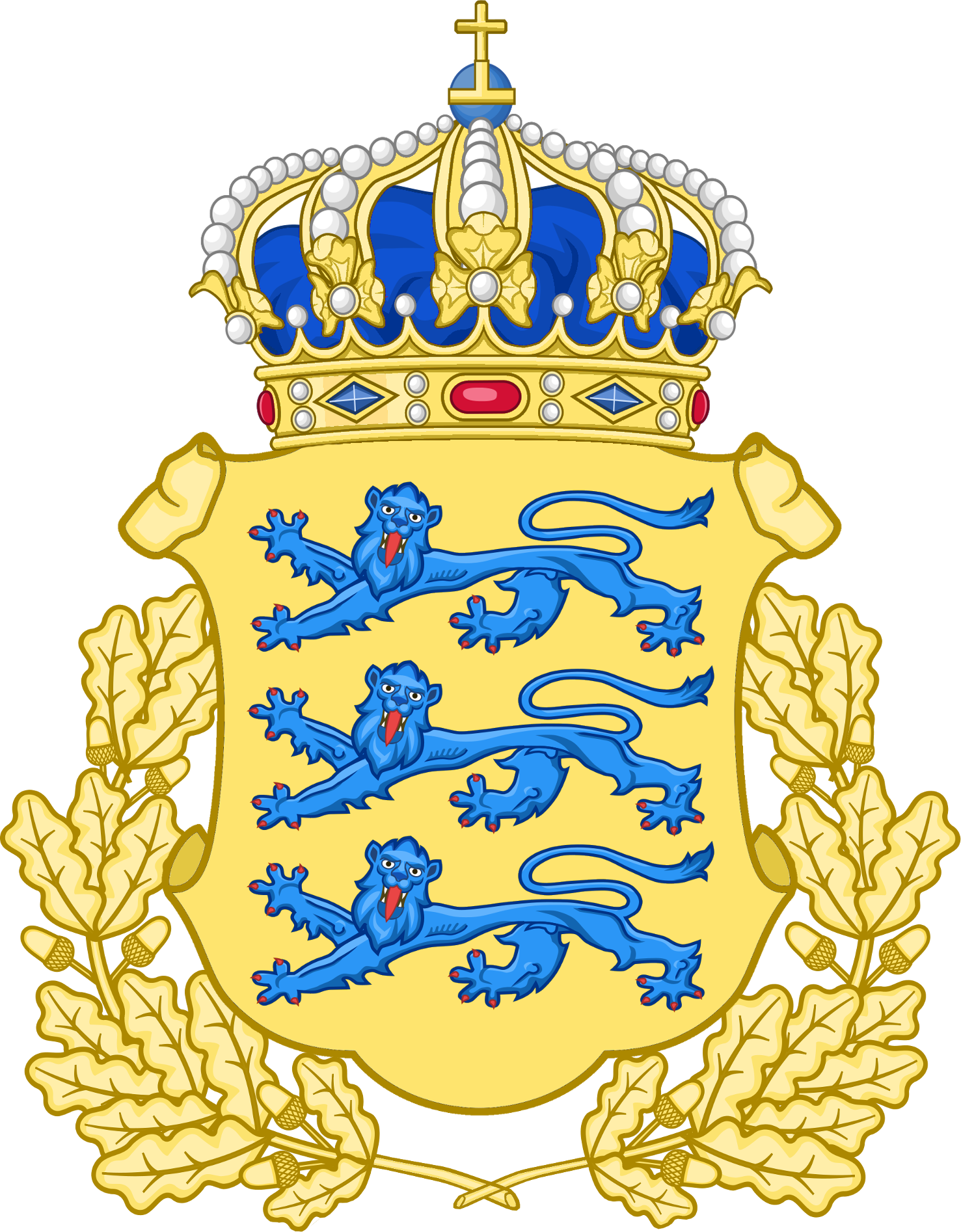
Image Lesser Coat of arms of Royal Estonia.png Future FANDOM powered by Wikia
The current coat of arms of Estonia is a golden shield which includes a picture of three blue lions in the middle, with oak branches placed on both sides of the shield. The insignia was copied from the coat of arms of Denmark, which ruled northern Estonia in the thirteenth century. The coat of arms of Estonia depicts a golden shield, which.

Estonia Coat of Arms Sticker (Oval) Estonia Coat of Arms Oval Sticker by flags of the world
Greater coat of arms. The full, or greater, coat of arms of Tallinn depicts three blue marching, forward-facing (passant gardant) lions crowned with golden crowns on a golden shield.The shield is topped with a silver helmet placed affronté, with closed visor and red lining.The mantling is blue and golden. A golden neck chain featuring a stone hangs around the helmet's neck.

Coat Of Arms Of Estonia Tshirt Government Of Estonia, PNG, 550x512px, Estonia, Art, Artwork
The coat of arms of Estonia is a golden shield which includes a picture of three left-facing blue lions with red tongues in the middle, with golden oak branches placed on both sides of the shield. The insignia derive(s) from the coat of arms of Denmark, which ruled northern Estonia in the 13th-14th centuries and parts of western Estonia in the 16th-17th century.